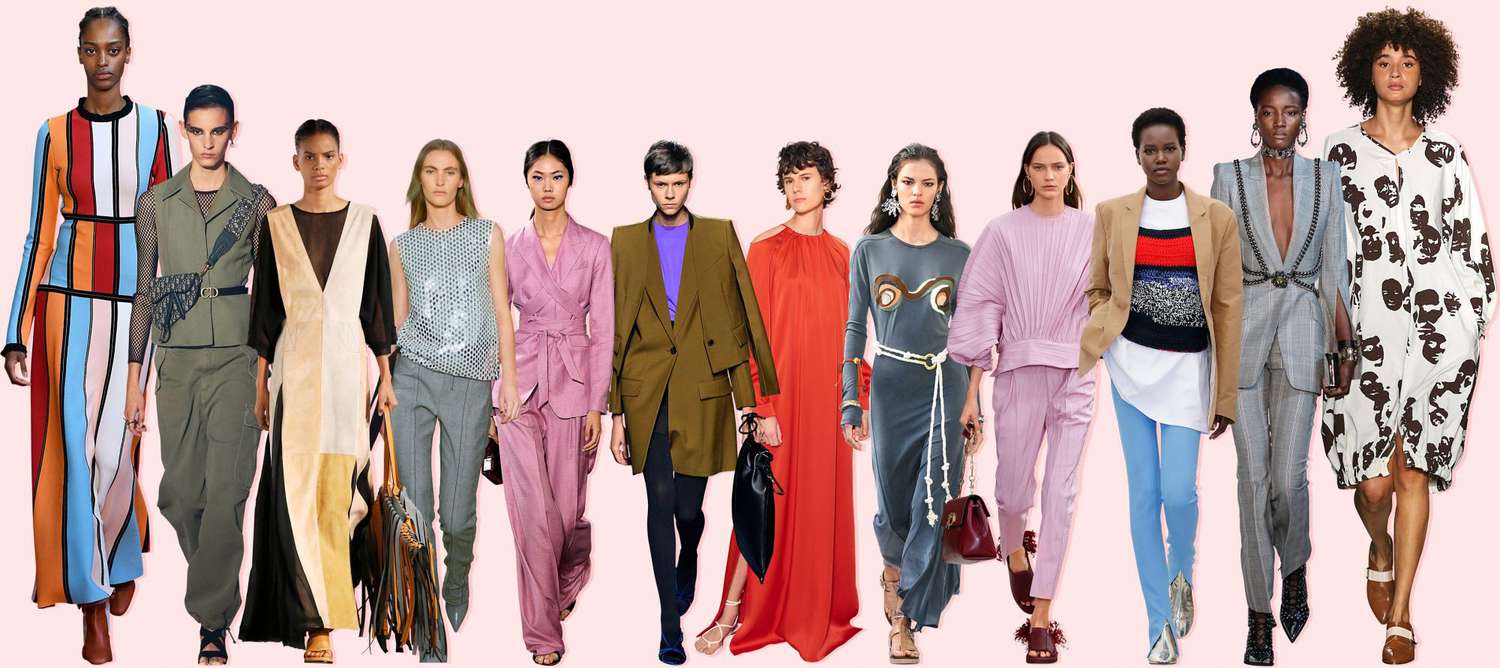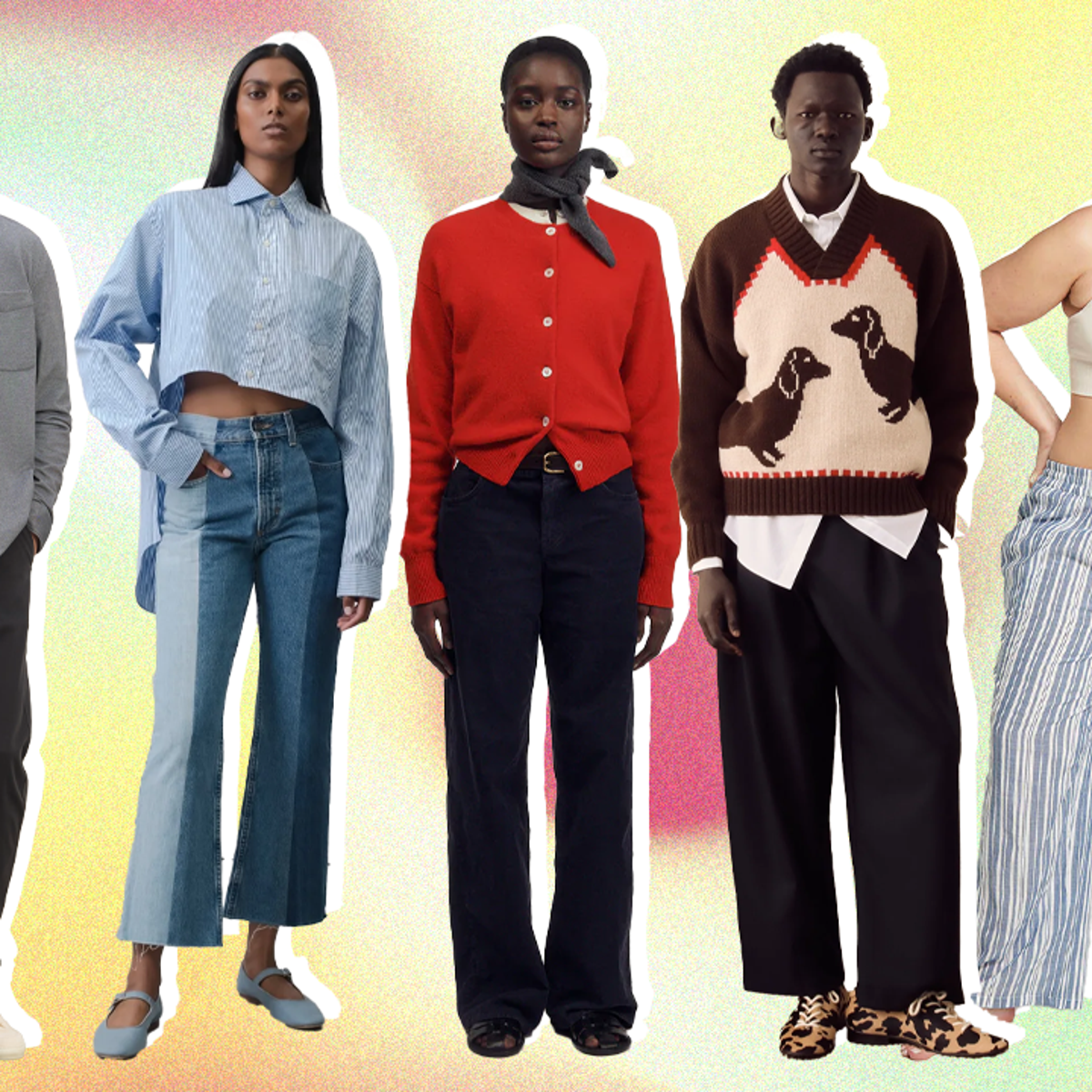Comprehending Garments: The Significance of Material Choices in Your Wardrobe
The option of textile in clothing plays an essential duty in both appearances and performance. Various products offer differing levels of comfort, breathability, and durability, straight affecting the user's experience. Understanding these subtleties can boost one's closet markedly. Many ignore just how these choices can affect not just personal style, however additionally sustainability. What material choices could redefine your closet and align it with both style and obligation?
The Duty of Fabric in vogue and Functionality

Typical Textile Kinds and Their Features
When selecting garments, comprehending the qualities of usual material kinds is necessary for making notified options. Cotton, a widely-used natural fiber, is recognized for its convenience, breathability, and gentleness, making it appropriate for casual wear and everyday garments. Linen, another natural alternative, boasts exceptional moisture-wicking buildings and a distinctive appearance, perfect for cozy climates.Wool, commonly favored for its warmth and longevity, differs in excellence; merino woollen is soft against the skin, while coarser kinds are made use of for outerwear. Artificial materials like polyester and nylon provide toughness and resistance to creases, making them preferred for activewear and travel garments. Ultimately, blends, which incorporate all-natural and synthetic fibers, can boost functionality while maintaining convenience. By acknowledging these fabric features, people can pick clothes that lines up with their way of living and visual choices.
Breathability and Comfort: Choosing the Right Fabrics for Different Environments
Selecting the right textiles for different environments can considerably enhance convenience and overall wearability. Breathable products are important in warm climates, as they enable air flow and wetness dissipation. Fabrics such as cotton, linen, and moisture-wicking synthetics effectively attract sweat away from the body, keeping the user cool and dry. Conversely, in chillier climates, thicker textiles like wool or fleece supply insulation while maintaining breathability, ensuring warmth without overheating.Additionally, the selection of fabric weight plays an essential function; light-weight textiles are better for summer season, whereas much heavier options are suited for winter wear. Understanding the special residential or commercial properties of each material makes it possible for individuals to clothe properly for differing climate conditions. Eventually, selecting breathable and comfortable fabrics tailored to certain environments can greatly boost daily comfort and enhance the total experience of wearing garments.
Sturdiness and Treatment: Exactly How Material Influences Longevity of Your Closet
Selecting the right products can substantially affect the longevity and care demands of a closet. Fabrics such as cotton and polyester are recognized for their resilience and ease of upkeep, making them ideal for day-to-day wear. In comparison, fragile products like silk and shoelace call for even more cautious handling and specialized cleaning methods, which can enhance the moment and effort needed for care. Branded Clothing.Durability is likewise influenced by the fabric's weave and finish; firmly woven fabrics tend to resist deterioration much better than loosely woven choices. In addition, synthetic blends commonly provide enhanced longevity, incorporating the best qualities of numerous fibers.Understanding the care directions for every material is you can look here vital, as improper drying out or washing can cause early wear. Eventually, picking durable products can lead to a longer-lasting closet, lowering the regularity of replacements and adding to an extra lasting fashion choice
The Influence of Material on Fit and Silhouette

Sustainable Fabric Options: Making Eco-Friendly Choices
The influence of textile expands past fit and silhouette to encompass environmental variables, prompting a growing passion in sustainable material options. Green fabrics, such as natural cotton, hemp, and Tencel, are getting traction among consumers who prioritize sustainability in their closets. These materials are commonly generated with less chemicals and water, minimizing their environmental footprint.Additionally, recycled fabrics, made from post-consumer waste, offer a cutting-edge solution to the fabric market's air pollution issue. Brands significantly accept openness in their sourcing techniques, allowing consumers to see it here make enlightened decisions regarding their purchases.Choosing sustainable materials not just supports ethical practices yet likewise urges the style sector to adopt more liable manufacturing methods. As awareness of environmental issues increases, people are prompted to assess the lasting impact of their fabric options, fostering a movement in the direction of a more environmentally mindful and sustainable method to fashion.
Boosting Design: How Fabric Can Change an Outfit
While numerous may concentrate on color and cut when picking a clothing, the selection of material plays an important role in elevating style and boosting overall appearance. Different materials share unique state of minds and messages; for instance, silk emanates high-end and class, while denim uses an informal, relaxed vibe. The appearance and drape of a textile can significantly change the shape, with organized materials supplying a refined appearance and softer ones producing an extra fluid, unwinded aesthetic.Moreover, the weight of the material affects wearability throughout periods. Lightweight textiles like linen and cotton are perfect for summertime, while larger products such as wool and velour supply warmth and beauty in chillier months. Understanding material residential properties, such as breathability and stretch, additionally empowers people to make enlightened choices that improve convenience without jeopardizing design. Ultimately, the ideal fabric can transform an original site outfit from ordinary to phenomenal, making it an essential consideration in any wardrobe.
Frequently Asked Questions
How Do I Determine the Fabric Material of My Apparel?
To determine fabric content, one can take a look at treatment tags, conduct melt examinations for fiber identification, or speak with material swatches. These approaches aid set apart products, guaranteeing informed options for clothes treatment and upkeep in daily wear.
Can Material Selection Affect My Mood or Self-confidence?
Material selection can significantly affect a person's state of mind and self-confidence. Branded Clothing. Particular products might stimulate sensations of comfort or elegance, while others can really feel unflattering or restrictive, ultimately influencing self-perception and emotional well-being throughout the day
What Fabrics Are Finest for Sensitive Skin?
For individuals with delicate skin, all-natural materials like cotton, bamboo, and bed linen are typically suggested. These products are breathable, hypoallergenic, and much less likely to create irritation, making them suitable options for comfort and skin health.
How Do I Appropriately Clean and Take Care Of Different Fabrics?
To properly wash and care for different materials, one have to take into consideration each material's certain demands, including temperature level settings, cleaning agents, and drying out approaches, ensuring durability and keeping the material's initial top qualities for excellent usage.
Are There Certain Fabrics for Athletic or Performance Put On?
Athletic or performance wear frequently utilizes textiles such as polyester, spandex, and nylon. These materials are developed for moisture-wicking, breathability, and versatility, enhancing motion and convenience during exercises while supplying toughness and support. On the other hand, in colder environments, thicker textiles like wool or fleece offer insulation while maintaining breathability, making certain warmth without overheating.Additionally, the selection of textile weight plays a vital role; lightweight textiles are more effective for summer, whereas heavier choices are fit for winter season wear. In contrast, delicate materials like silk and shoelace need even more cautious handling and specialized cleaning methods, which can enhance the time and effort required for care.Durability is likewise affected by the textile's weave and coating; snugly woven fabrics have a tendency to withstand wear and tear far better than loosely woven choices. In contrast, rigid textiles can limit motion yet supply a timeless, refined look.Moreover, the thickness and appearance of the material can affect the aesthetic understanding of body shape. The influence of material extends beyond fit and silhouette to include environmental factors, triggering a growing passion in lasting material selections. The structure and drape of a fabric can drastically modify the silhouette, with organized materials offering a sleek appearance and softer ones creating an extra fluid, loosened up aesthetic.Moreover, the weight of the material affects wearability across periods.